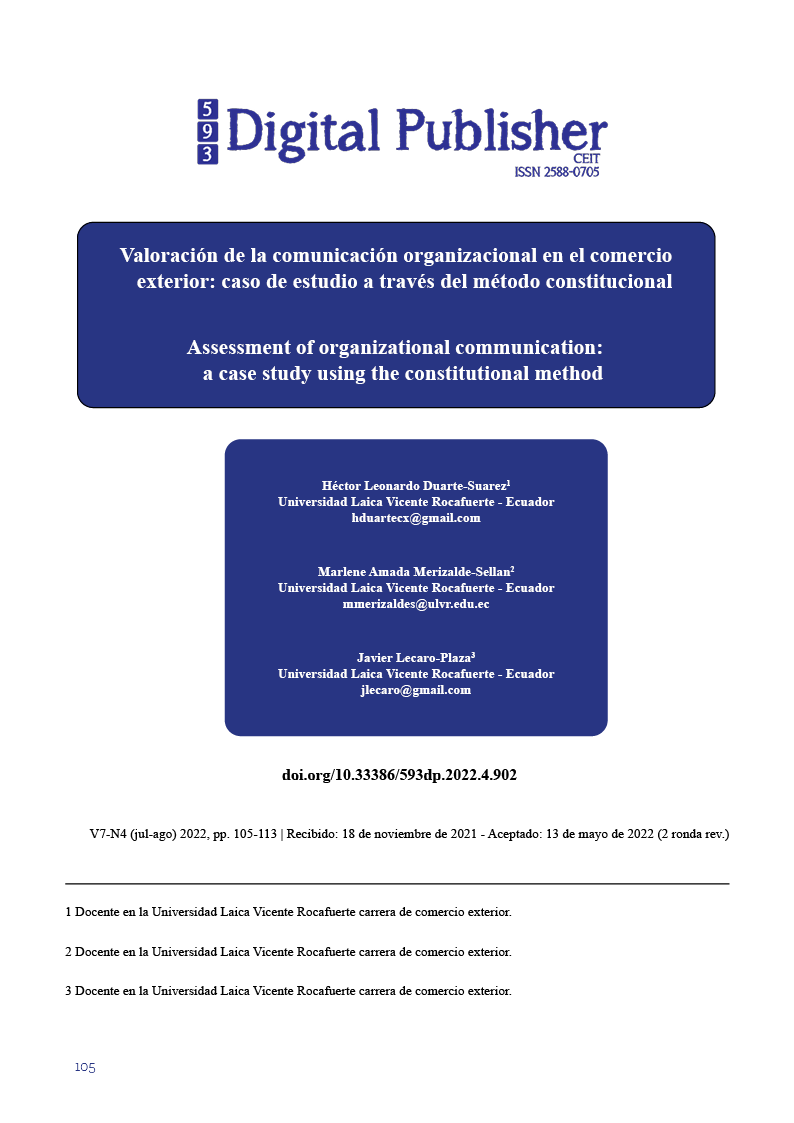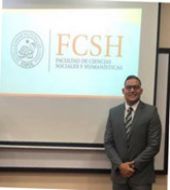Assessment of organizational communication: a case study using the constitutional method
Main Article Content
Abstract
The research recommends determining the method of communication for the organizational development of one company and another, which allows the development of business, understanding and the establishment of relationships between the parties involved, in general, communication provides fundamental elements for the realization of business. The research cases of this study are based on companies that carry out foreign trade activities; however, we are limited to analyze only the communicational part as an interesting point due to their complex management models in the public and private spheres, which are characterized by the aggregate perceptions that shape organizational behavior. The research method is horizontal in nature, involving the study of constitutive communication methods (CCO) to advance the dynamic concept of communicative maturity in order to theorize, analyze and develop the value of communication at the organizational level. The results obtained seek that the implemented processes have greater quality and relevance. The conclusions drawn suggest that it is necessary to develop alternatives to improve communication within the operating units. The importance of communication in an international negotiation process provides the possibility to understand each other with their business partners and, based on the achievement of common objectives, to establish favorable business relationships.
Downloads
Article Details

This work is licensed under a Creative Commons Attribution-NonCommercial-ShareAlike 4.0 International License.
1. Derechos de autor
Las obras que se publican en 593 Digital Publisher CEIT están sujetas a los siguientes términos:
1.1. 593 Digital Publisher CEIT, conserva los derechos patrimoniales (copyright) de las obras publicadas, favorece y permite la reutilización de las mismas bajo la licencia Licencia Creative Commons 4.0 de Reconocimiento-NoComercial-CompartirIgual 4.0, por lo cual se pueden copiar, usar, difundir, transmitir y exponer públicamente, siempre que:
1.1.a. Se cite la autoría y fuente original de su publicación (revista, editorial, URL).
1.1.b. No se usen para fines comerciales u onerosos.
1.1.c. Se mencione la existencia y especificaciones de esta licencia de uso.
References
Barrett, D. J. (2002). Change communication: Using strategic employee communication to facilitate major change. Corporate Communications an International Journal, 7(4), 219–231
Bruning, S. D., & Ledingham, J. A. (1999). Relationships between organizations and publics: Development of a multi-dimensional organization-public relationship scale. Public Relations Review, 25(2), 157–170.
Cooren, F., Kuhn, T., Cornelissen, J. P., & Clark, T. (2011). Communication, organizing and organization: An overview and introduction to the special issue.
Hallahan, K., Holtzhausen, D., van Ruler, B., Verčič, D., & Sriramesh, K. (2007). Defining strategic communication. International Journal of Strategic Communication,1(1), 3–35.
Huang, Y. H. C. (2012). Gauging an integrated model of public relations value assessment (PRVA): Scale development and cross-cultural studies. Journal of Public
Relations Research, 24(3), 243–265.
Herzberg F, M. B. (2011). The Motivation to Work. 1a ed. Estados unidos: Transaction publishers.
Organization Studies, 32(9), 1149–1170. https://doi.org/10.1177/0170840611410836
Isaksen, S. G., & Ekvall, G. (2010). Managing for innovation: The two faces of tension within creative climates. Creativity and Innovation Management, 73–88.
Kissi, J., Dainty, A., & Liu, A. (2012). Examining middle managers’ influence on innovation in construction professional services firms. A tale of three innovations Construction Innovation: Information, Process, Management, 11–28.
Maslow, A. (2016/1962). El hombre autorrealizado: Hacia una psicología del Ser. Editorial Kairós, (año de publicación del libro original; 1973).
Van Ruler, B. (2018). Communication theory: An underrated pillar on which strategic communication rests. International Journal of Strategic Communication, 12(4),367–381




